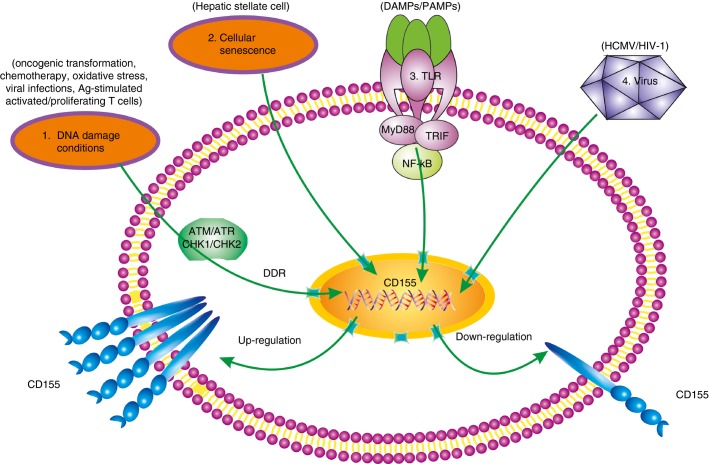Figure 1.
Dual regulation of CD155 expression. 1, DNA damage conditions, including oncogenic transformation, chemotherapy, oxidative stress, viral infections and antigen-stimulated activated/proliferating T cells (referred to as dysregulated proliferation), stimulate CD155 gene transcription through the DNA damage sensors ataxia-telangiectasia mutated (ATM), ATM and Rad3-related (ATR), and check-point kinase 1/2 (CHK1/2). 2, Cellular senescence such as hepatic stellate cells can also induce up-regulation of CD155 expression. 3, Toll-like receptor (TLR) interactions with pathogen- and damage-associated molecular patterns (PAMPs and DAMPs) also increase CD155 expression in nuclear factor-κB (NF-κB)-dependent way (the former three factors in green line) 4, whereas both human cytomegalovirus (HCMV) and HIV-1 can induce down-regulation of CD155 expression (the final factor in black line). DDR, DNA damage response; MYD88, myeloid differentiation factor 88; TRIF, Toll/interleukin-1 receptor domain-containing adaptor inducing interferon-β.

